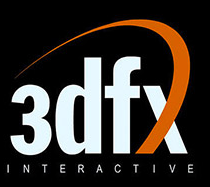×
3dfx Interactive, Inc. was a pioneering company in the field of graphics acceleration for personal computers during the late 1990s. Based in San Jose, California, it was established in 1994 and quickly became a key player in the gaming industry due to its revolutionary Voodoo Graphics line of graphics cards. These cards introduced groundbreaking performance and features that greatly enhanced 3D rendering, making them highly popular among gamers.
3dfx's proprietary technologies, including its Glide API, offered unmatched performance in games optimized for its hardware. However, the company faced mounting challenges as competitors like NVIDIA and ATI (later acquired by AMD) began producing superior, more flexible solutions that supported industry-standard APIs like Direct3D and OpenGL.
In a bid to remain competitive, 3dfx shifted its business model from selling chips to OEMs (original equipment manufacturers) to producing and marketing complete graphics cards. This move alienated its OEM partners and resulted in reduced market share. By the early 2000s, financial difficulties and strategic missteps led to its decline. In 2000, NVIDIA acquired 3dfx's intellectual property, signaling the company's end.
Timeline of 3dfx Interactive
1994:
- Founding: 3dfx Interactive was founded by Ross Smith, Gary Tarolli, and Scott Sellers. The company focused on developing high-performance 3D graphics solutions.
1996:
- Voodoo Graphics Launch: The first Voodoo Graphics (Voodoo1) chipset was released, revolutionizing gaming by providing hardware acceleration for 3D graphics. It quickly became a market leader in gaming performance.
1997–1998:
- Peak Popularity:
- The Voodoo2 was launched, offering significant performance improvements and support for multiple cards in SLI (Scan-Line Interleave) mode, a precursor to modern multi-GPU technologies.
- The company's Glide API became widely adopted in gaming, ensuring strong software support for its hardware.
- 3dfx cards became the standard for high-performance gaming.
1998:
- Rise of Competitors: NVIDIA introduced the RIVA TNT, a competing graphics card that supported Direct3D and OpenGL, industry-standard APIs. The competition began to intensify.
- 3dfx acquired STB Systems, a graphics card manufacturer, to produce its own cards, transitioning away from its previous business model of selling chipsets to OEMs.
1999:
- Voodoo3 Launch: The Voodoo3 was released but faced criticism for lacking features like 32-bit color and support for newer APIs, which competitors like NVIDIA's GeForce 256 provided.
- Financial losses mounted as the company struggled to keep up with technological advancements and competition.
2000:
- Decline and Acquisition:
- The Voodoo5 series was released, featuring multi-chip designs for better performance but suffered from delays and high production costs.
- The acquisition of Gigapixel, a company with innovative graphics technology, failed to turn the tide.
- In December 2000, NVIDIA acquired 3dfx's core assets, including its intellectual property and patents, for $70 million. The company ceased operations.
2002:
- Final Dissolution: 3dfx formally completed the liquidation process, marking the end of the company.
